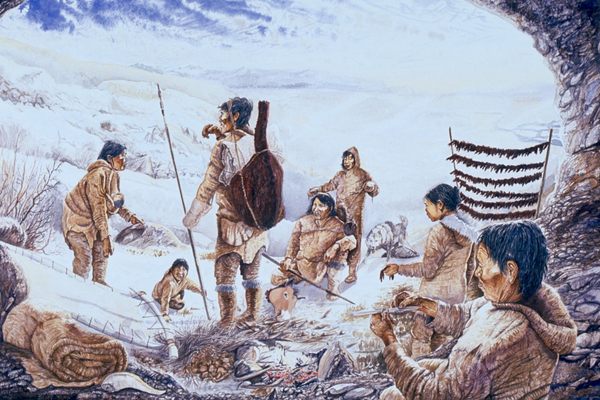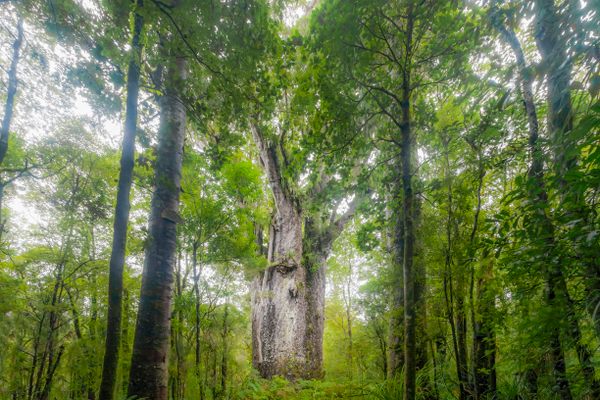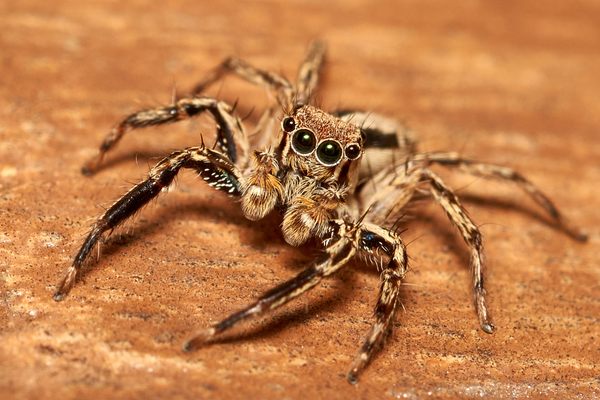Does This Silly-Looking Animal Have a Solution to Climate Change?
Beavers can reshape the North American ecosystem—if we let them.
When Europeans first arrived in North America, they found a landscape dense with hardwood forests, braided with abundant waterways and teeming with one of the world’s most valuable species: the beaver (Castor canadensis). Trading beaver fur shaped the continent’s colonization, minting some of the New World’s first millionaires. But what at first seemed like an endless resource disappeared faster than anyone expected. By the mid-19th century, North America’s beavers were almost extinct.
The rapid decline of the beaver population didn’t just spell trouble for the goose-footed, paddle-tailed rodent, says author Leila Phillip. The entire continent was drastically altered by their loss. By building dams, beavers not only changed the shape and speed of waterways, they stored tons of water in ponds, recharged aquifers and filtered pollutants from the water. Without them, North America became drier, less ecologically resilient, and more vulnerable to destruction from intense storms and wildfires.
In her new book Beaverland: How One Weird Rodent Made America, Phillip explores the past, present and promising future of the beaver. Atlas Obscura sat down with her to discuss the remarkable species, and how it went from colonial-era commodity to fuzzy climate change-fighting engineer.

Beavers are a really oddly shaped animal. Can you describe the characteristics that make them so unique?
They are wonderfully weird. They’re one of these animals that moves between the water world and land. They have these beautiful bearlike faces with their little ears. They have these nictitating membranes that close over their eyes like underwater goggles. They have these forepaws that are very human-like because the palms are bare and the fingers are remarkably dexterous, and these huge gooselike feet. It’s such a contradiction.

Then you’ve got this paddle tail that looks like it’s been run over by a tractor, because the tail is not just this flattened expanse of skin without fur on it, but it has what looks like indentations of treads. That tail is remarkable because, scientists believe, it registers water pressure. When the water level goes down in a pond, beavers will come from far away and immediately start to fix it. They can actually feel it in their tail because it is so sensitive.
You write that beaver are the only species besides humans that “dramatically alter the landscape.” How?
They will basically make a dam from whatever they have to hand. I’ve seen beaver dams that are just made of mud and stones and they’ll tend to pile sticks that they have. I’ve seen hubcaps stuffed in a beaver dam; up in Canada, people lost their internet and then they went out and found that all this optic fiber was stuffed into a beaver dam.
The largest animal construction on the planet that we know of—it’s been seen by satellite—is a beaver dam in Alberta, Canada. It’s about a half a mile long, that’s bigger than the Hoover Dam, and it’s over 50 years old. That means it was built by and has been maintained by more than one set of beavers.

Beaver researchers call pre-colonial North America “Beaverland.” What was it like and what happened to all those animals?
North America is called “Beaverland” because beavers are a keystone species in the environment in terms of creating the wetlands that then help keep the river system healthy and dynamic. And, of course, the river system, these are the arteries that basically bring life throughout the land. Beavers were so important for the growth of the boreal forests and the hardwood forests that would lead to the explosion of animal abundance and wildlife in North America.
You can argue that the fur trade was the first wave of environmental devastation in North America because the first ships came here looking for beaver pelts. The first colonies here in the East helped pay their debts with beaver pelts. But it didn’t take long [for the beaver to almost completely disappear].
Geomorphologists now talk openly about the 300 years or so, like 1600 to 1900, as the “great drying.” Beavers were wiped out, the forests were greatly deforested out here in the East, and then English-style farming practices began and moved west. These things really led to the drying of the wetlands and the degradation of the river system.
Now, a hundred years later, researchers know that beavers can play a major role in habitat restoration and mitigating the impacts of climate change for a fraction of the cost of modern engineering methods. Why are beavers not a go-to environmental solution already?
It just has been proven again and again that, in many instances, beavers can create water storage at least a hundred times cheaper than engineered projects. They’re proposing to bring 4,563 beavers into the upper watershed of the Milwaukee River. If they repopulated those areas, they estimate that in 25 years those beavers could store 1.7 trillion gallons of water annually. That’s water storage with a systemic value of $3.3 billion a year.
I think beavers are starting to have their moment. It’s no longer the hypothetical, it’s more how do we harness this as a solution: how many beavers would be needed where, what type of beaver wetlands should be created, what would be the most impactful area. That alone demonstrates a big shift. Every little beaver out there making a new wetland is another sponge helping us.

How might restoring greater numbers of beavers to the North American landscape mitigate some of the increasing effects of climate change like drought and flooding?
Beavers have a really important role to play as we face climate change. Locally where I live here in Connecticut, a beaver dam broke during a terrible storm and people were up in arms, saying the beavers have to go. But the visionary director of the Audubon said no, we’re going to need these beavers, we’re going to need this water. Instead of taking the beavers out, she spent the money to put in a pond leveler system [which inserts a slow-moving drain underwater without having a major impact on water pressure]. Last summer we had a terrible drought and I went and looked and most of the local stream systems dried up but that stream system did not because the beavers were there. The biodiversity was preserved, the water was preserved—and all the water that was maintained there was also going down into the aquifer and filling local wells. The next town over had water rationing and we didn’t.
We now understand that we need to face climate change on a big level and a little level. We need policy change but we also need to act locally. In beavers, we have millions of highly trained engineers ready to work for us for free if we’re willing to coexist with them.
This interview has been edited for length and clarity.





































Follow us on Twitter to get the latest on the world's hidden wonders.
Like us on Facebook to get the latest on the world's hidden wonders.
Follow us on Twitter Like us on Facebook